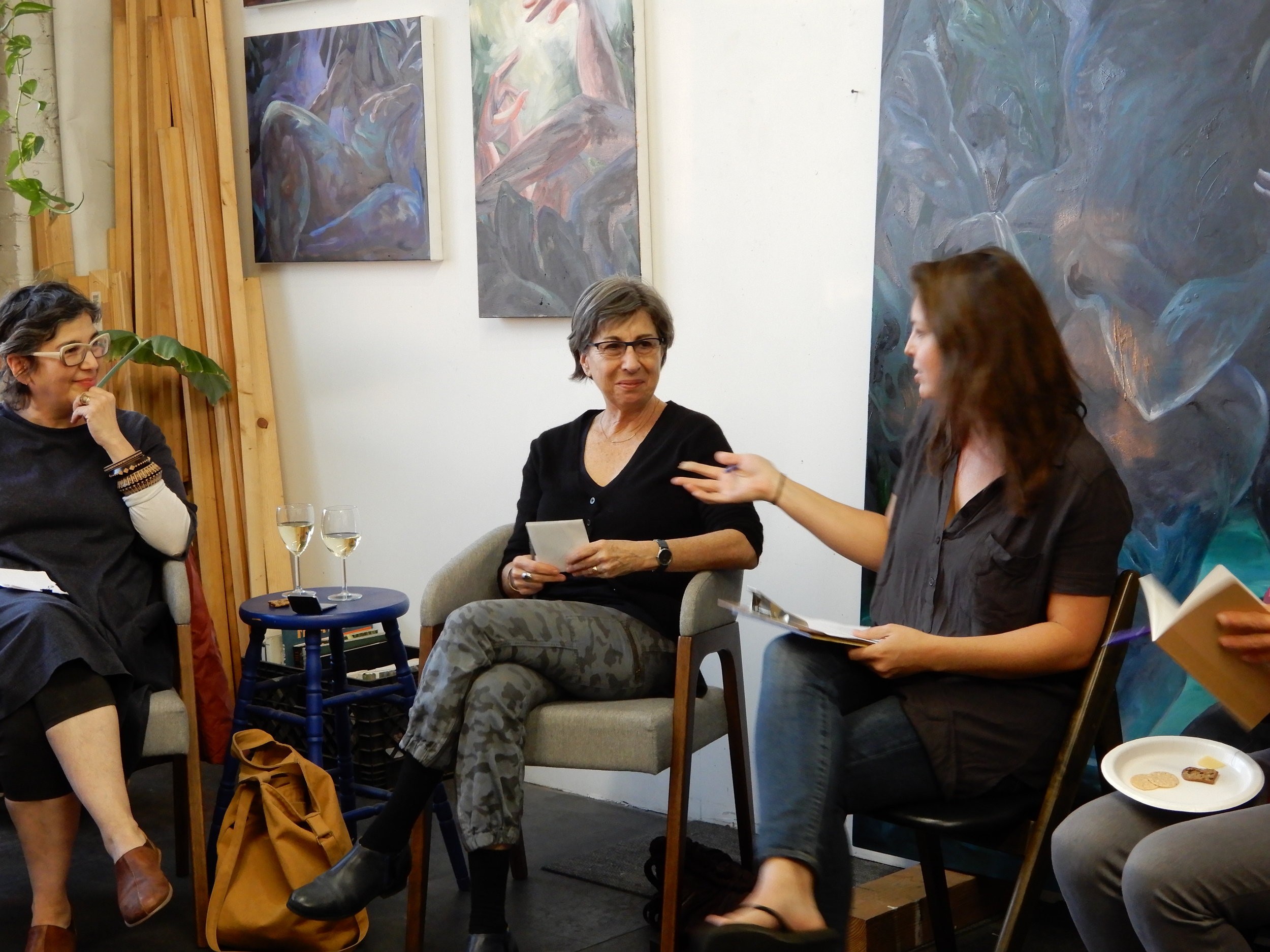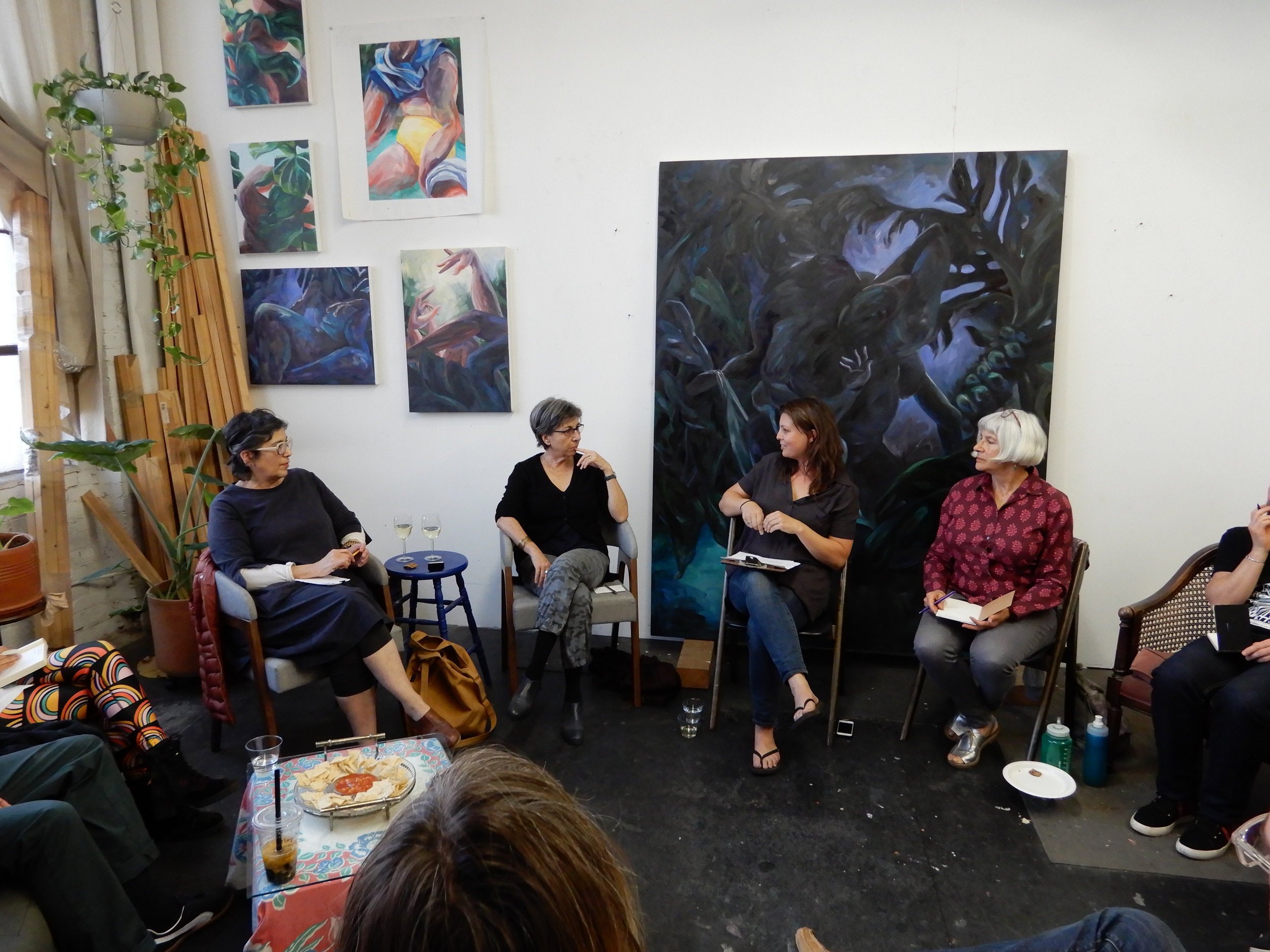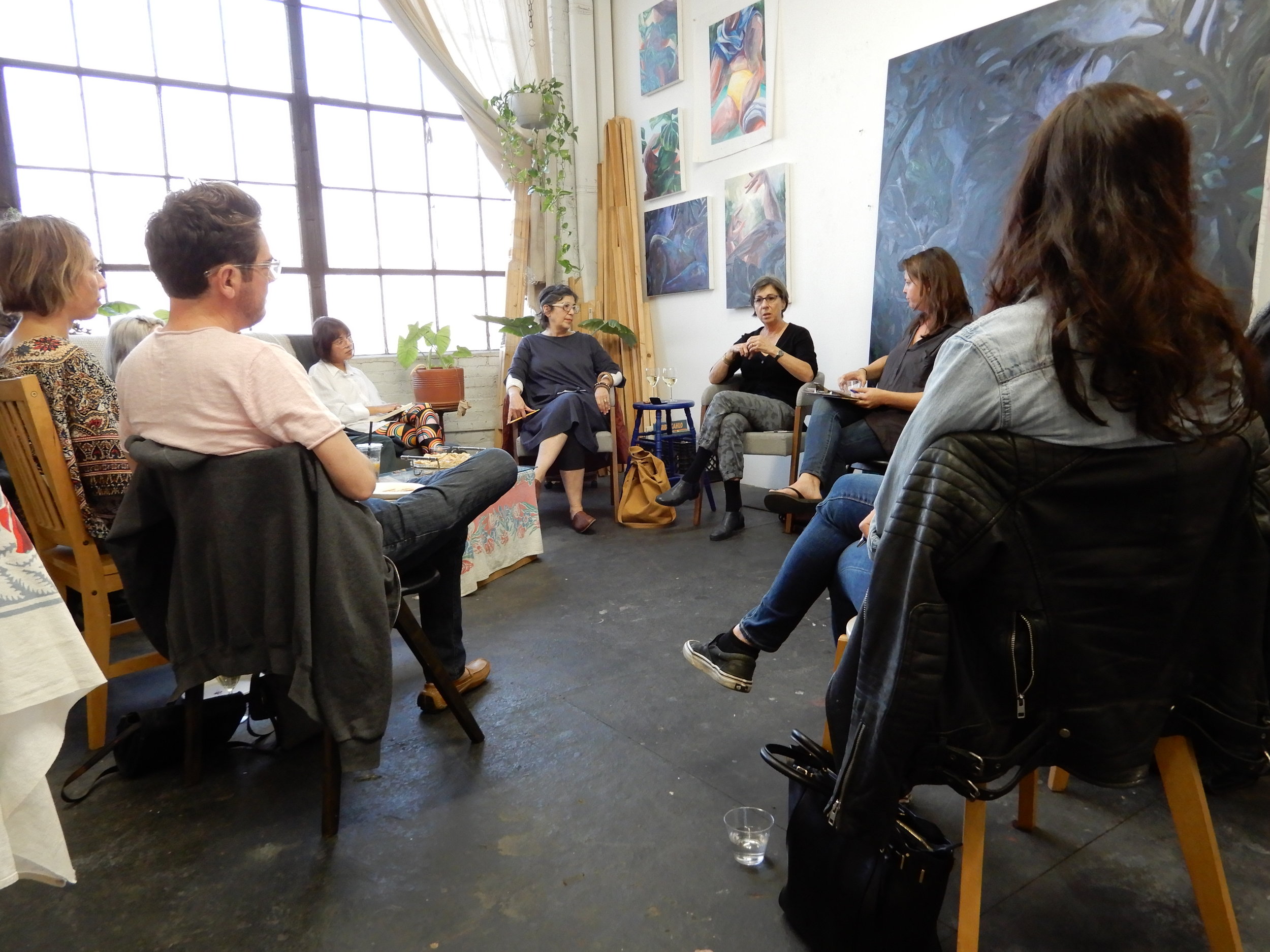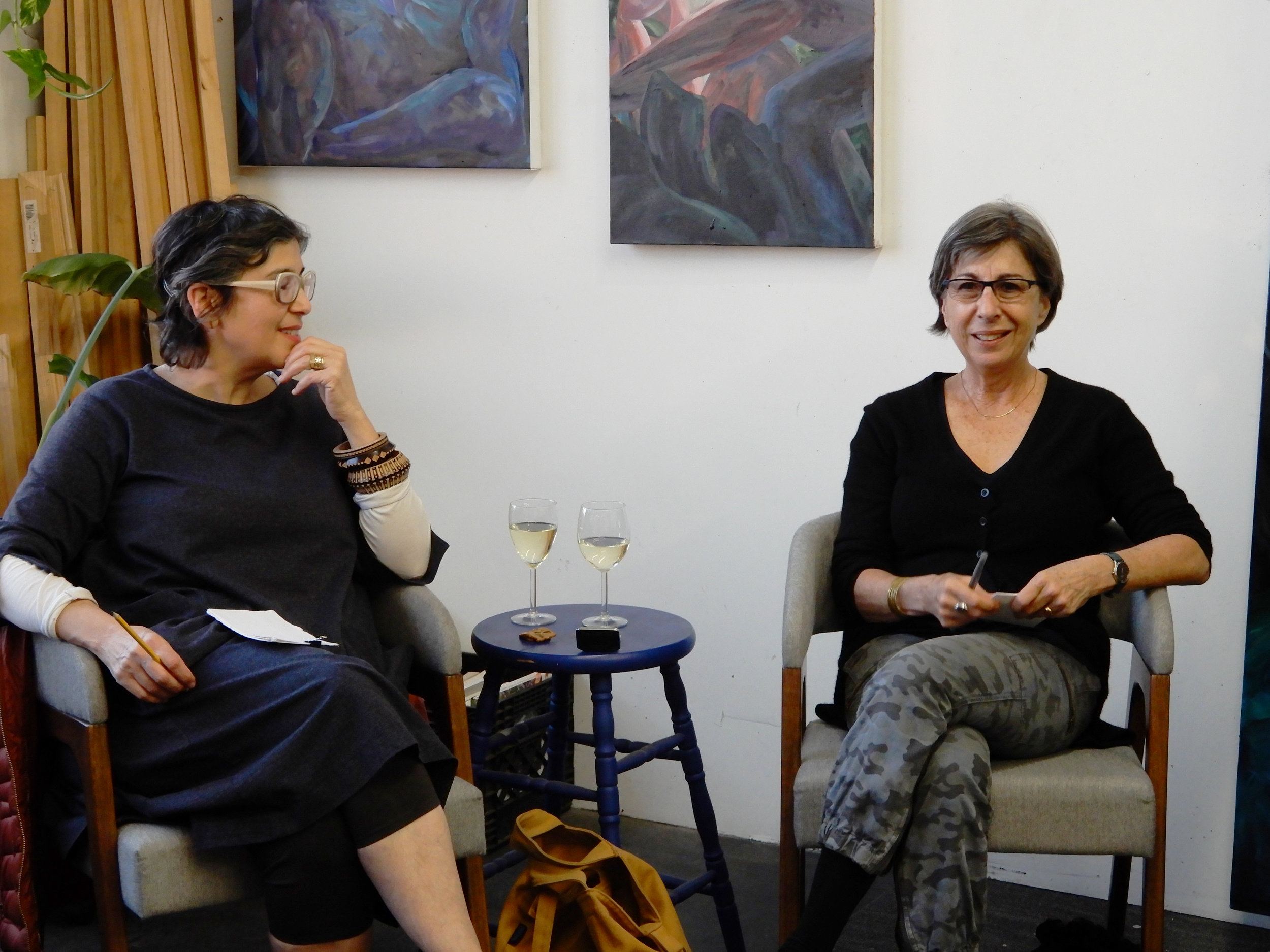In March 2019, The Artist’s Office launched a series of conversations for artists with arts professionals, gatekeepers and thought leaders. These conversations are small gatherings that are opportunities for artists to gain insight and knowledge to help strategize and make choices for their art practice.
The first talk was on the jurying process for artist opportunities such as grants, fellowships, juried shows and residencies with Dorit Cypis - artist, mediator and social activator and Irene Tsatsos - Gallery Director/Chief Curator at the Armory Center for the Arts.
Tsatsos has been a juror for the NEA, the FOCA, COLA and CCF Fellowships, juried shows and others. Cypis has also been a juror for the NEA as well as the Herb Alpert Foundation, various individual artist grants and panels for other Foundations and non-profits such as Los Angeles Contemporary Exhibitions. Below are summaries of the topics discussed at the talk.
What is the jurying process like?
During a typical selection process, applicants are winnowed down first by eliminating incomplete applications and ones that are not the right fit. Then the jurors begin to rate the remaining applicants. With a group of jurors, they might begin to look for overlap amongst their highest rated applicants. Sometimes there is a lot of disagreement and conversation, but both Tsatsos and Cypis said that in their experience, panelists/jurors work very hard to choose worthy applicants and generally have the best intentions.
What are applications judged on? Images? The CV and prior accomplishments?
They could be judged solely on the work, but might also be about how compatible the applicant is with the organization’s priorities. The organization may have certain values and principles that they are looking to support so artists should become very familiar with the granting organization to understand the types of work/projects they would want to support.
Is it worth applying even if you aren’t selected?
Cypis said it best: “Make it larger than the win.” With each application you are getting your work in front of eyes that will consider it. Follow up calls, studio visits and other opportunities do sometimes come out of the jurying process. This is a way to get your work SEEN as opposed to people just seeing your face at openings.
You can also apply to reaffirm your own practice. You don’t need validation from acceptance. You can learn to drive your own practice by being selective and fine tuning your work for applications. You might end up using that proposal or idea for another opportunity.
How important is the Artist Statement?
All of the materials requested are vehicles to tell your story. Use each piece to it’s highest advantage. Make sure that your statement connects to the images you show. Structure your CV to reflect your priorities and present your work and accomplishments how you want them to be seen.
Are there any potential conflicts of interest when it comes to who jurors select? For example, the most recent Los Angeles Artadia Awards were announced. One of the jurors - Erin Christovale - had recently co-curated the Made in LA Biennial. 3 of the 6 finalists and 2 of the 3 awardees were in her exhibition. Is this an example of support from institutions and gatekeepers that we need more of, of an example of favoritism by a curator?
Tsatsos discussed the blurry distinction between professional and personal relationships. Some of the ways conflicts of interest are identified are by evidence of financial gain for the juror or family members, and that’s about it. In other words, it’s very difficult to pin down.
Sometimes it does seem like the same artists are getting all the opportunities.
Our field rewards relationships. Connect with your peers. If you are lacking opportunity- create your own. Build your connections by working with people and focusing on reciprocity and generosity.
Other general tips:
Images: Jurors are looking at flat images or small sections of video. Keep this in mind and make your work samples the highest quality, most engaging work. In determining which work to show, go with what you feel most passionately about.
The narrative is important. In all your written materials, brevity, clarity and authenticity are key. No jargon, buzzwords, no fluff. Don’t be generic - specificity is essential.
You never know exactly why you get rejected, so just be authentic.






